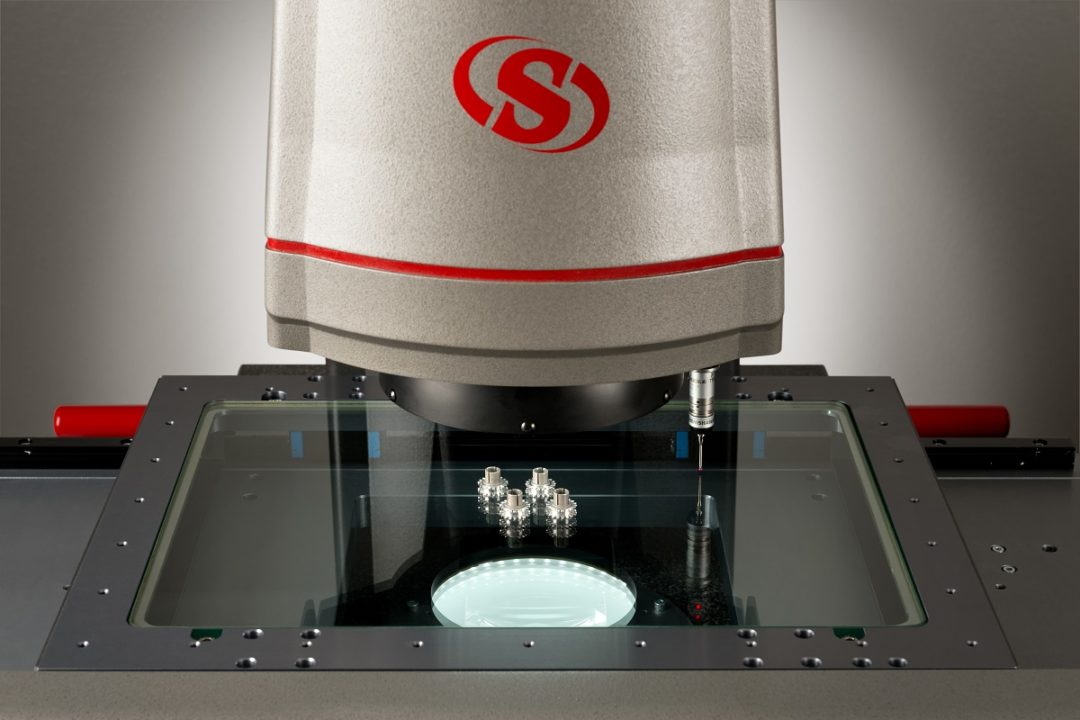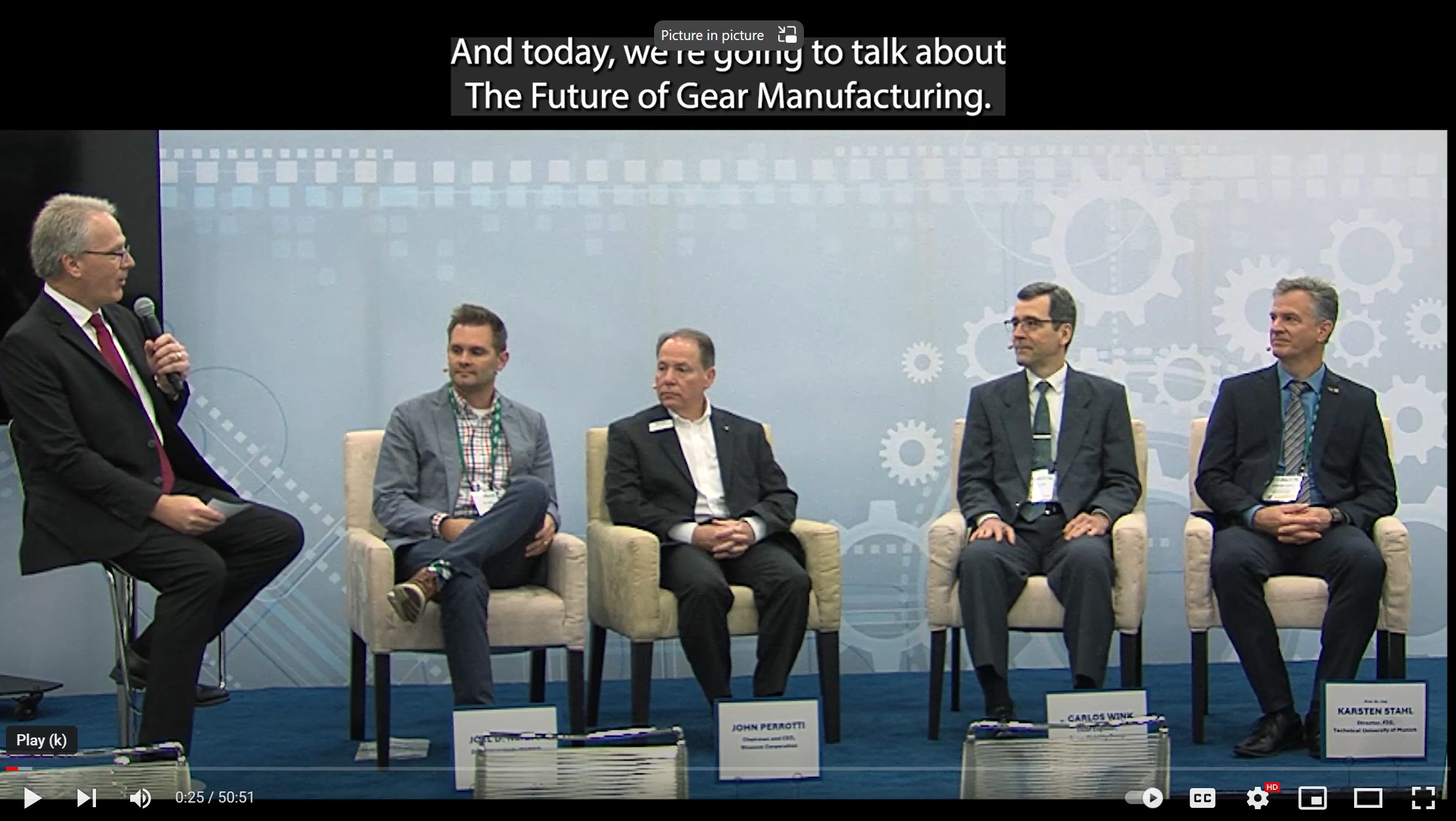Starrett Helps Produce Accurate and Repeatable Production Runs with Latest Metrology Equipment
Gear Technology recently caught up with CW Moran, marketing specialist at Starrett, to discuss gear metrology and inspection technologies.
GT: How have your measurement systems for gears evolved in recent years?
CWM: Gear measurement has evolved considerably in recent years to become a fully automated process. One of the main inspection objectives for gear manufacturing is to measure runout, or the variation in distance between successive tooth spaces on the gear and the articulate surface. Modern vision and optical measurement systems feature digital overlay comparisons to CAD files of a master template, replacing the traditional micrometer with pins or balls. This gives instantaneous results on runout for the entire gear in question, complete with tolerance zones. Wide ranges of lens options, such as the 0.14X lens on the Starrett AVR-FOV Vision System, can even enable multiple gears to be inspected simultaneously in the large field of view.
Also, the integration of multi-sensor measurement capabilities such as a touch probe, allow for more discreet or recessed areas to be accurately inspected. The software on the latest measurement systems has also become far more user friendly, allowing virtually anyone on the shop floor to initiate and run a part profile on the system. This is known as “walk up metrology.” These advancements help produce accurate and repeatable production runs, while reducing lead times and QC bottlenecks.

GT: What are the latest capabilities to this equipment that give your customers a competitive edge?
CWM: Optics are one of the main areas of innovation providing a competitive edge in Starrett Optical Comparators and Vision Systems. Lens options on optical comparators range from 10x to 100x, all of which are interchangeable in seconds. Both zoom and telecentric optical video systems are available for the Starrett Optical Comparator line. In our Vision Systems, fixed or interchangeable zoom or telecentric camera lenses are available and easily changed out via the bayonet system. Multi-lens systems are offered on both Optical and Vision Systems, saving time by eliminating the need to recalibrate after switching lenses.
Large field of view lenses, up to 2.3” (X-axis) x 1.9” (Y-axis) are available on select models, such as the AVR-FOV, which allow for more of the work-stage or part to be viewed at once. Ideal for larger parts and multiple small parts, when combined with the “Super Image” software application function, a single large image can be stitched together to show the entire part. Such a large optical range reduces the amount of equipment required for QC, saving floor space and time. The software allows for auto-recognition part programs to be created. Once created, when the part in question is placed in the field of view and the program is initiated, the measurements are taken automatically. These automated features help facilitate “walk up metrology.”
GT: How important is the collaboration between the manufacturer and the end user regarding the selection of the right inspection system?
CWM: When a customer decides to invest in a metrology product, they are also investing in a partnership with the metrology company. Collaboration between customer and supplier is key to ensuring the right system is chosen for the application requirements. The first step is a thorough application review for selecting the right system format, options, lenses, lighting, and applicable accessories. At Starrett, we provide support for the lifetime of the system by serving as a go-to resource that starts with working hand in hand on proper setup and initial training, in order to maximize the use of the system. Technical support is always available, either in person or digitally, for service and for troubleshooting any issues or questions that may arise over time. Annual calibrations are also available; ensuring that accurate and repeatable results can be relied on for years to come.

GT: What role is smart manufacturing (Industry 4.0) solutions playing in your metrology equipment for gears in 2021?
CWM: Industry 4.0 solutions are being incorporated into our metrology products at every level of production. For gear inspection, the traditional method of inspection is with a micrometer utilizing pins or balls. The rollout of DataSure 4.0 wireless data collection technology this year from Starrett brings micrometer measurement into the digitalization world by allowing micrometers to communicate instantly and wirelessly with a central computer. This means that multiple individuals can be performing quality checks on the shop floor and the information can be analyzed in real time.
In the Starrett Optical Comparator lines, new technology in select models for readout will allow for instant wireless upload to a central computer via Bluetooth connection. Digitalization can also help identify developing issues such as excessive wear on manufacturing tools. Features like “Go/No-Go" tolerance zones can be viewed in real time to identify if a machine on the floor is still within specifications, allowing manufacturers to prevent issues such as excessive backlash before they arise.
GT: What other technology advancements are vital to inspection/metrology today?
CWM: The sheer adaptability and flexibility of today’s inspection systems. Modern systems have wide arrays of lens configurations that are easy to interchange. Lighting options are also customizable and easy to control. New systems, such as the Starrett AVX550, even have the ability to utilize multiple lenses that can be used sequentially, eliminating the need to recalibrate which saves time. System options come in floor standing, tabletop, and large format, depending on customer needs, and many systems are available with multiple stage travel options.
Systems such as the Starrett HVR100 Flip can change (flip!) between a horizontal and vertical orientation as well. Users can also select from manual or CNC control for most systems and have options such as touch probe capability. A wide range of accessories such as rotary indexers, part holding fixtures, and touch probe changing racks, further enhance the inspection capability of any single inspection system.
The end result of this wide range of products and configurations is that one single system has the ability to perform many, if not all, tasks that a manufacturer might require, allowing them to save floor space, time and money.
GT: How has training/technical support changed post-COVID?
CWM: At Starrett, we have always been a big proponent of having a digital presence for technical support and training. In a post-COVID world, this need for quality virtual engagement has only been accelerated. We have developed an in-house demo facility where we can shoot and produce high quality demos, as well as go live to interact with the end user. Manufacturers can send in sample pieces, or can select from our sample collection. They can see first-hand the benefits of a system or receive training on their new system without ever having someone enter the building. Our use of multiple cameras allows for the system as a whole, the stage, and the control software to be viewed simultaneously, providing the same level of detail as an in-person visit. With this live digital engagement platform, we can interact with more customers faster than before, reducing lead times while addressing technical support issues, training, and product demonstrations.
GT: How much of your quality/inspection solutions are customizable?
CWM: Virtually all of our quality and inspection solutions are customizable. While we offer a wide range of both horizontal and vertical systems in both tabletop and floor standing models, we also offer a large range of compatible lighting options, accessories, indexers, fixtures and more. Almost every system can be custom configured to have fixed or interchangeable lenses of the users’ selection. Stage size, travels, and lighting options can also be adjusted accordingly. For situations where customization of an in-line solution is not sufficient, Starrett prides itself on developing truly customized designs as one-offs, engineered and developed in-house. In this way, we have the ability to address the needs of almost any customer regardless of how challenging or unique.
GT: How will gear inspection change in the coming years and what role will Starrett play in these changes?
CWM: Advancement in the modern manufacturing environment is dependent on delivering quality products faster that are machined to the highest degree of accuracy. Starrett Metrology is dedicated to providing the measurement and inspection tools necessary to accomplish these goals.
In the coming years, look for more comprehensive 3D model based inspection, especially in prototype and short-run situations. Production lead times will continue to be reduced as the user interface becomes increasingly more user friendly, allowing more employees to be able to run quality checks or inspections in real time. Full integration and automation will continue to develop, helping to identify quality issues before they arise, such as premature cutting tool wear. Ultimately, end users will be able to refine their processes and deliver faster, more precise inspection results to manufacture gears with a higher level confidence than ever before.







